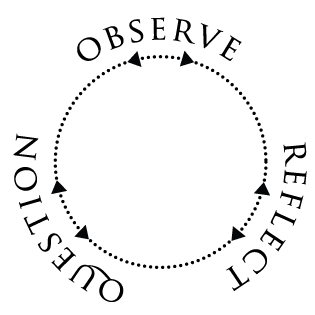Learn It
Primary Source Analysis
Analyzing primary sources is a 3-step process and each step helps us to better understand the historical sources we select for our research projects. Mr. Lexington, my history teacher, says to think of it like this – analyzing sources is all about thinking deeply and asking questions. That’s good to know because he also says you can never ask too many questions. Knowing how to analyze a primary source will help us learn new information about the research topic and then make connections to information we may already know.

Analyzing historical sources helps students think about different viewpoints.
A Closer Look at Primary Sources
Let’s take a minute to walk through each step of the primary source analysis process.
Keep in mind these steps don’t have to happen in order. Questions in step 3 and reflections in step 2 are designed to bring you back to step 1, which is the observation step. Looking closely at the small details on the source can help you find clues about what was happening when it was created. Basically, the longer and more carefully you observe and think about your sources, the more you will discover!













